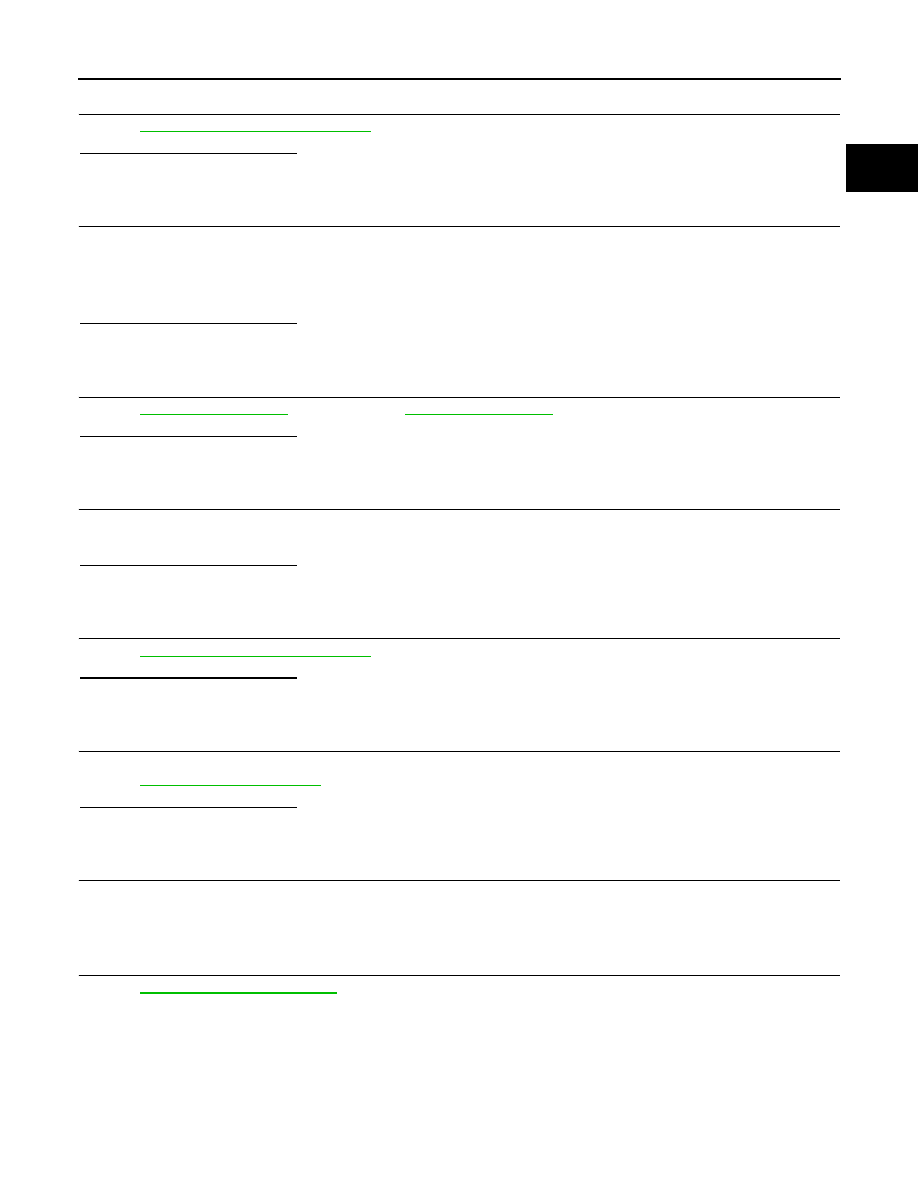Infiniti G37 Coupe. Manual - part 525

P0441 EVAP CONTROL SYSTEM
EC-281
< COMPONENT DIAGNOSIS >
[VQ37VHR]
C
D
E
F
G
H
I
J
K
L
M
A
EC
N
P
O
7.
CHECK EVAP CANISTER PURGE VOLUME CONTROL SOLENOID VALVE
EC-291, "Component Inspection"
Is the inspection result normal?
YES
>> GO TO 8.
NO
>> Replace EVAP canister purge volume control solenoid valve.
8.
CHECK EVAP CONTROL SYSTEM PRESSURE SENSOR CONNECTOR
1.
Disconnect EVAP control system pressure sensor harness connector.
2.
Check connectors for water.
Is the inspection result normal?
YES
>> GO TO 9.
NO
>> Replace EVAP control system pressure sensor.
9.
CHECK EVAP CONTROL SYSTEM PRESSURE SENSOR FUNCTION
Is the inspection result normal?
YES
>> GO TO 10.
NO
>> Replace EVAP control system pressure sensor.
10.
CHECK RUBBER TUBE FOR CLOGGING
1.
Disconnect rubber tube connected to EVAP canister vent control valve.
2.
Check the rubber tube for clogging.
Is the inspection result normal?
YES
>> GO TO 11.
NO
>> Clean the rubber tube using an air blower.
11.
CHECK EVAP CANISTER VENT CONTROL VALVE
EC-298, "Component Inspection"
Is the inspection result normal?
YES
>> GO TO 12.
NO
>> Replace EVAP canister vent control valve.
12.
CHECK EVAP PURGE LINE
Inspect EVAP purge line (pipe and rubber tube). Check for evidence of leaks.
Refer to
Is the inspection result normal?
YES
>> GO TO 13.
NO
>> Replace it.
13.
CLEAN EVAP PURGE LINE
Clean EVAP purge line (pipe and rubber tube) using air blower.
>> GO TO 14.
14.
CHECK INTERMITTENT INCIDENT
GI-38, "Intermittent Incident"
.
>> INSPECTION END
Water should not exist.